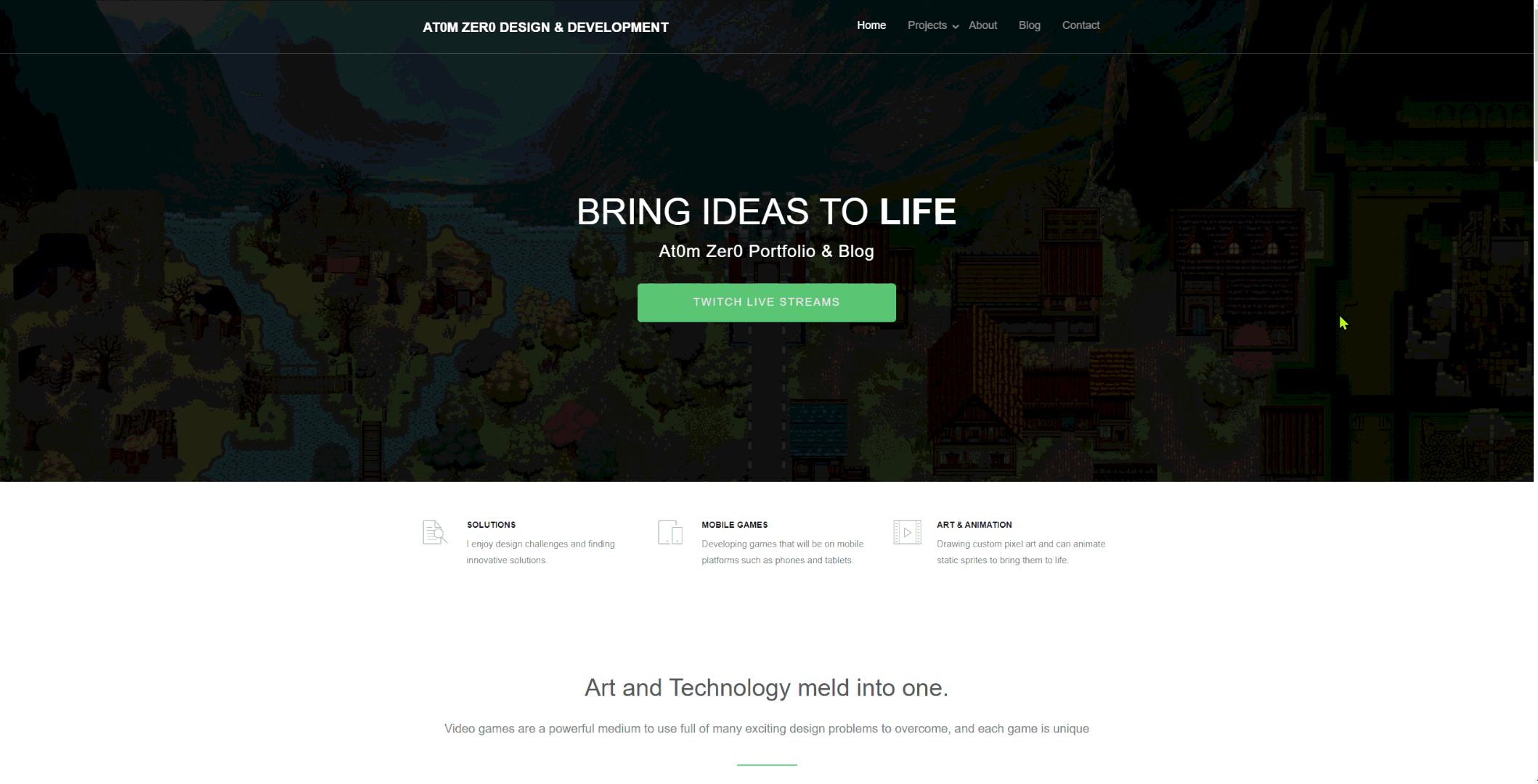The first class I took was Intro to Web Programming. During the class I learned the basics of HTML, CSS, and a little bit of Javascript. I built the first version of my blog using an HTML template, Below are some GIFs with some examples of what I worked on. I don’t really have much to say about it other than I want to apply the experience to this site soon by building a custom arcade page. I was surprised at how straight forward it all was and hitting F12 when on sites to see how everything is set up.
In last year (2023) I made the decision to go back to school. The state of Michigan had a government program called Michigan Reconnect program which offered money for returning students at community colleges. At the time it had been a year since I started working on my first game and I was spending all of my free time learning how to program for games but I wanted to learn more about programming to get a better understanding of code fundamentals. I had discovered that I really enjoyed programming while working on the game and I wanted to do more, so I decided to use the opportunity to pursue a degree in Programming for Electronic Gaming.


My classes were staggered, so 2 weeks before my Intro to Wed Programming class was finished I started my Intro to Game Development class. This class focused on game programming fundamentals by teaching us how to code in Python. After taking this class a lot of the programming that I learned while building the game with the other guys and a lot of the coding that Kyle did (our lead programmer) clicked and I started to see the patterns a lot better.
Our first big project in the class was building a text adventure game. Making this project helped me understand how to write better functions and how to use variables to store information that I could use to trigger events in the game.
Writing the mechanics was a lot of fun. I spent a lot of time creating the mechanics in this project and I actually plan on finishing the game and will be documenting the entire process / how it works in one of my blog series.
For the game I wrote code for:
- Importing the text from a separate file for organization
- Creating key value pairs for the options to call functions
- Handling player input as well as a check to make sure it’s a valid option
- Creating mini games that players could roll for a chance to sneak
- Functions that would handle how the story text would scroll
- Lists for storing items or for tracking player progress
The second project in the class had us use the Pygame module to create a pong clone. This made a lot of the code in the Game Maker Studio project all the sudden make sense to me (I’m currently going through to write all our code documentation and it’s wild how much easier it was to understand now (it’s exciting!)).
By the end of this project I better understood the concept of the main game loop and how objects needed to be created, what needed to update each frame, and how it all had to draw in the correct order for everything to work in sync.
In Game Maker Studio we work with actual objects and understanding that the Classes I was creating were essentially that made me understand both so much better. I was creating instances of both and even used the parent child relationship to pass code that both used down.
The power-ups were a lot of fun to make and my plan is to post it to the website eventually. Check back for updates on that, I want to polish it up and continue building on to it so I can expand on what I’ve already learned in Python.


